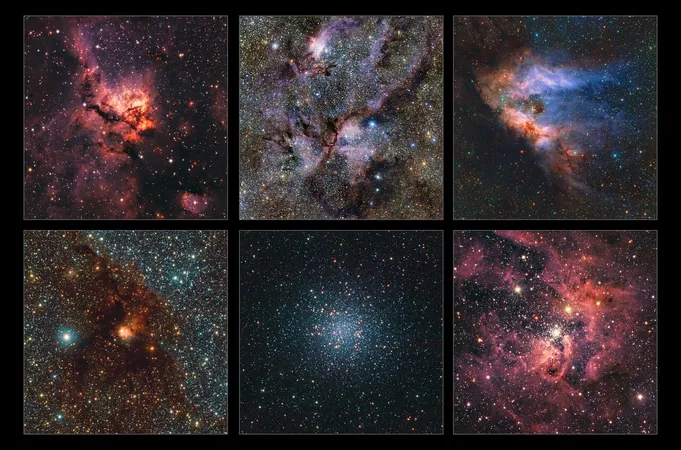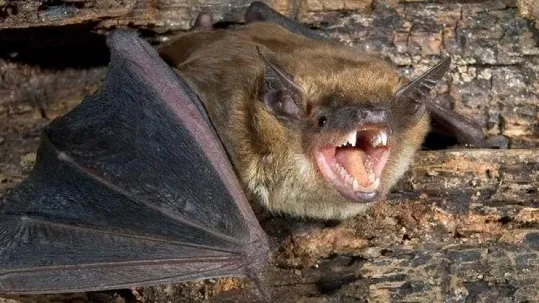
Incredible Breakthrough! Telescope Unveils Most Detailed Infrared Map of the Milky Way!
2024-09-26
Introduction
In an awe-inspiring leap for astronomy, researchers have unveiled the most detailed infrared map of the Milky Way, featuring over 1.5 billion celestial objects—a monumental achievement that changes our understanding of our galactic neighborhood forever.
This groundbreaking work was made possible through the remarkable capabilities of the European Southern Observatory's VISTA telescope in Chile, which spent more than 13 years capturing an astonishing 500 terabytes of data, marking it as the largest observational project ever undertaken with an ESO telescope.
Leading the Project
Leading the project was astrophysicist Dante Minniti from Universidad Andrés Bello in Chile, who enthusiastically stated, “We made so many discoveries; we have changed the view of our galaxy forever.”
Data and Discoveries
The colossal map consists of approximately 200,000 distinct images acquired using VISTA’s infrared camera, VIRCAM. This powerful camera can penetrate the dense clouds of dust and gas that often obscure celestial sights, illuminating the hidden wonders of our Milky Way.
The sheer scale of this dataset is mind-boggling; it covers an area of the sky equivalent to 8,600 full moons and contains ten times as many objects as a previous map released by the same team in 2012.
Among the notable findings are newborn stars, often cloaked in their own dust, and elusive globular clusters—dense groupings of some of the oldest stars in our galaxy.
Importance of Infrared Observations
Infrared observations are especially critical for detecting exceptionally cool objects that emit infrared light, such as brown dwarfs—referred to as “failed stars”—and free-floating planets that drift through space without a host star.
The observational campaign, which spanned from 2010 to the first half of 2023 over a total of 420 nights, involved repeated observations of each sky patch. This meticulous approach not only allowed researchers to pinpoint the locations of these celestial bodies but also to monitor their movement and changes in brightness over time.
Breakthrough Thoughts
One significant breakthrough from this study involves accurately measuring the distances to stars whose brightness fluctuates periodically—providing a cosmic yardstick that enhances our understanding of the Milky Way’s inner regions, previously hidden behind a veil of dust.
The team also tracked hypervelocity stars, which are propelled at tremendous speeds from the center of our galaxy following close encounters with the supermassive black hole located there.
Collaborative Efforts
This monumental project includes findings from the VISTA Variables in the Vía Láctea (VVV) survey and its companion project, the VVV eXtended (VVVX) survey. Together, they have already inspired over 300 scientific articles, with many more discoveries expected as researchers delve into this wealth of data for years to come.
Future Prospects
Looking to the future, ESO's Paranal Observatory is about to become even more powerful. VISTA is set to be upgraded with the revolutionary new 4MOST instrument, while ESO's Very Large Telescope (VLT) will be enhanced with the state-of-the-art MOONS instrument.
Together, these upgrades promise to provide detailed spectra of millions of objects surveyed, paving the way for countless discoveries that will unlock the mysteries of our universe!
Conclusion
Stay tuned, as the journey through our galaxy is just beginning, and the revelations to come could redefine everything we thought we knew about our cosmic home!









 Brasil (PT)
Brasil (PT)
 Canada (EN)
Canada (EN)
 Chile (ES)
Chile (ES)
 España (ES)
España (ES)
 France (FR)
France (FR)
 Hong Kong (EN)
Hong Kong (EN)
 Italia (IT)
Italia (IT)
 日本 (JA)
日本 (JA)
 Magyarország (HU)
Magyarország (HU)
 Norge (NO)
Norge (NO)
 Polska (PL)
Polska (PL)
 Schweiz (DE)
Schweiz (DE)
 Singapore (EN)
Singapore (EN)
 Sverige (SV)
Sverige (SV)
 Suomi (FI)
Suomi (FI)
 Türkiye (TR)
Türkiye (TR)